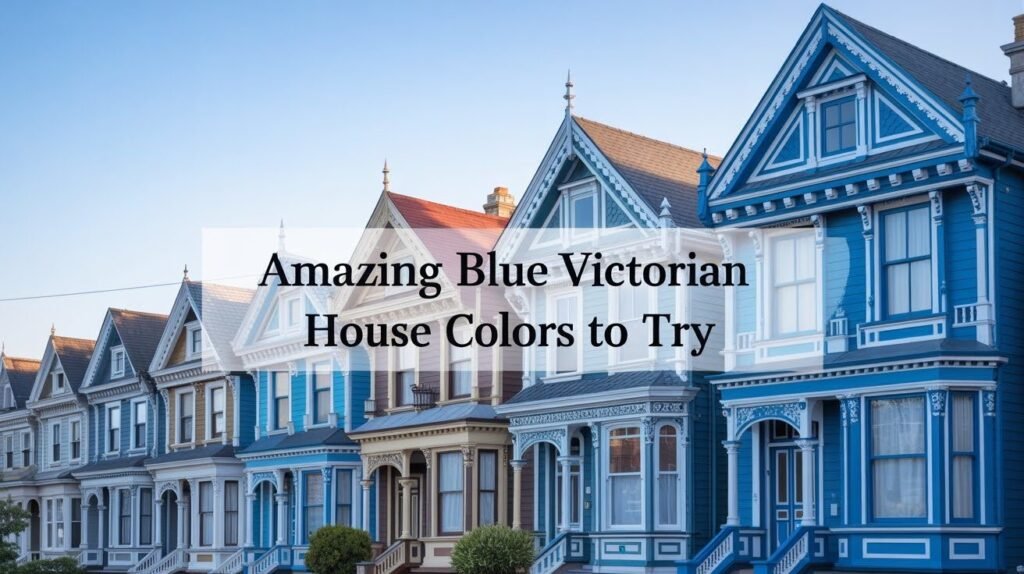Victorian homes emerged during the 1837-1901 era, known for their intricate architectural details and bold color choices.
These historic residences originally featured rich, vibrant palettes that highlighted their ornate trim work and decorative elements.
Among all color options, blue stands as a timeless and refined choice for Victorian exteriors, offering both classic appeal and modern versatility.
Blue complements the intricate woodwork and distinctive features that define Victorian architecture.
From deep navy tones to soft powder shades, blue creates visual interest while maintaining the dignified character these homes deserve.
This curated collection presents 13 remarkable blue options, each carefully selected to enhance your Victorian home’s natural beauty and historical significance.
Understanding Blue in Victorian Architecture
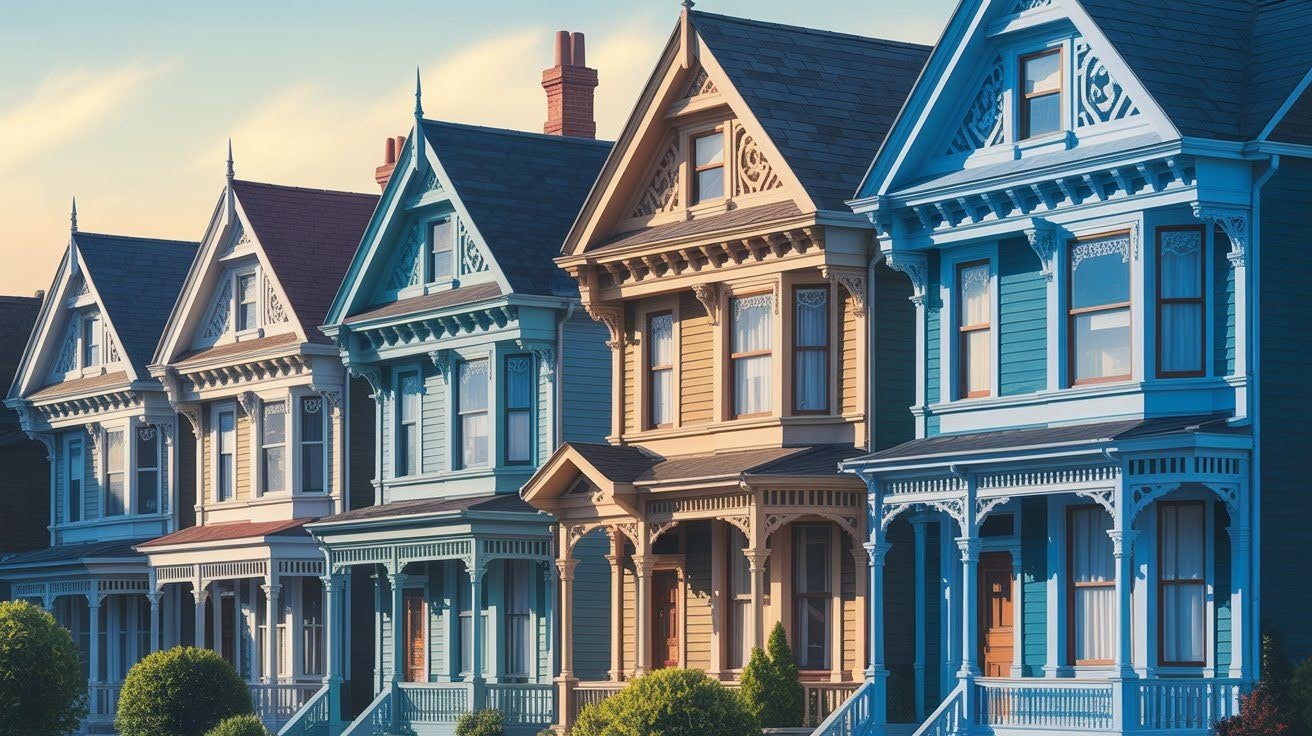
Blue transforms Victorian homes by highlighting architectural details while reflecting regional climate and lighting conditions perfectly.
The Symbolism of Blue in Classic Homes
Blue carries profound meaning in traditional home design, representing tranquility, prestige, and historic charm.
This color choice conveys stability and sophistication, qualities that align perfectly with Victorian sensibilities.
Homeowners during the Victorian period often selected blue to demonstrate their refined taste and social standing within the community.
How Blue Enhances Victorian Details
Blue creates striking contrast with architectural elements that define Victorian homes. White or cream trim work appears crisp against blue siding, while decorative shingles gain visual prominence.
Gables become focal points when painted in complementary shades, and intricate gingerbread details stand out beautifully. The color naturally highlights the elaborate craftsmanship that makes Victorian architecture so distinctive.
Choosing the Right Blue for Your Region & Lighting
Climate plays a crucial role in color selection. Coastal areas with frequent fog benefit from deeper blues that maintain their richness in muted light, while sunny plains regions can support lighter shades without appearing washed out.
Consider paint undertones carefully – some blues appear green in natural morning light but shift purple under evening artificial lighting. Test samples on different sides of your home before making final decisions.
List of 13 Amazing Blue Victorian House Colors
Find thirteen distinctive blue paint options that complement Victorian architecture and create memorable curb appeal for historic homes.
1. Navy Blue Depth
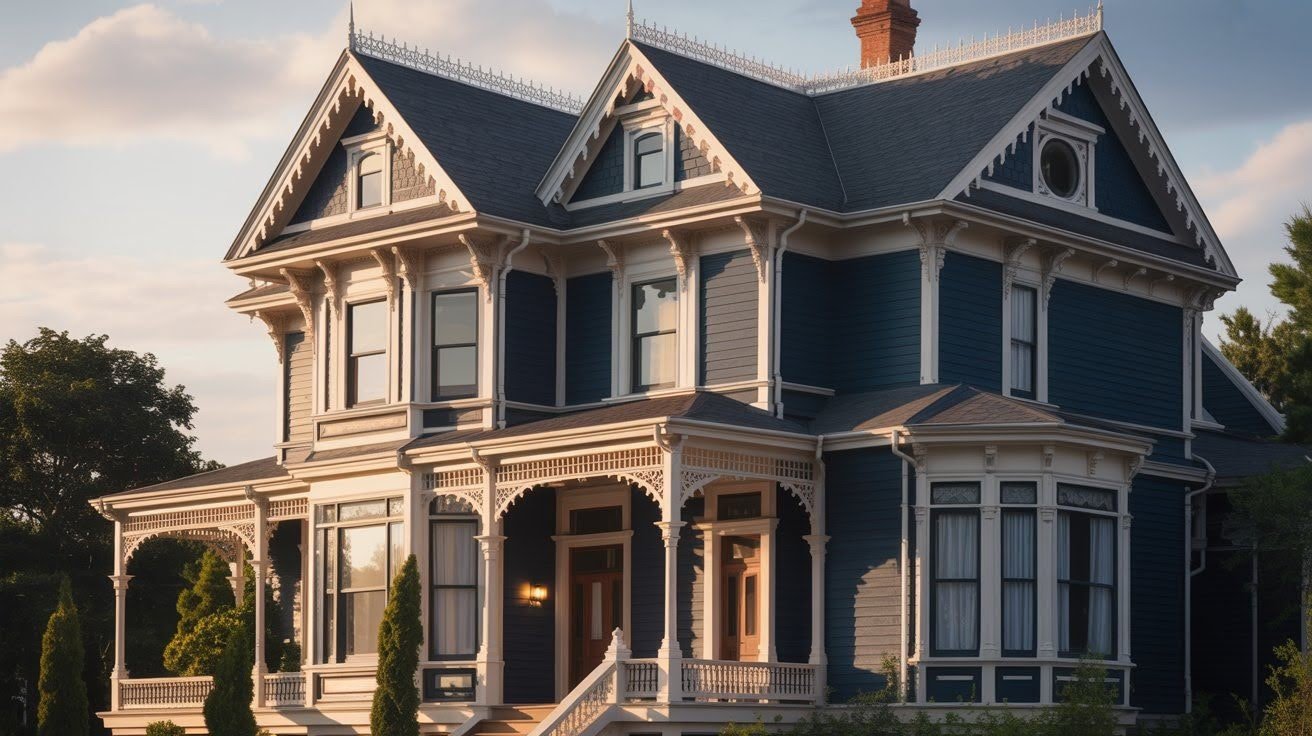
Deep navy creates a dramatic impact against Victorian architecture.
This rich, classic shade provides perfect contrast for ornate white or cream trim work, making decorative details pop with visual interest.
The Navy works exceptionally well on larger Victorian homes where bold color choices complement substantial architectural presence.
The deep tone adds sophistication while honoring traditional Victorian color schemes that favored rich, saturated hues for maximum visual impact.
2. Powder Blue Softness
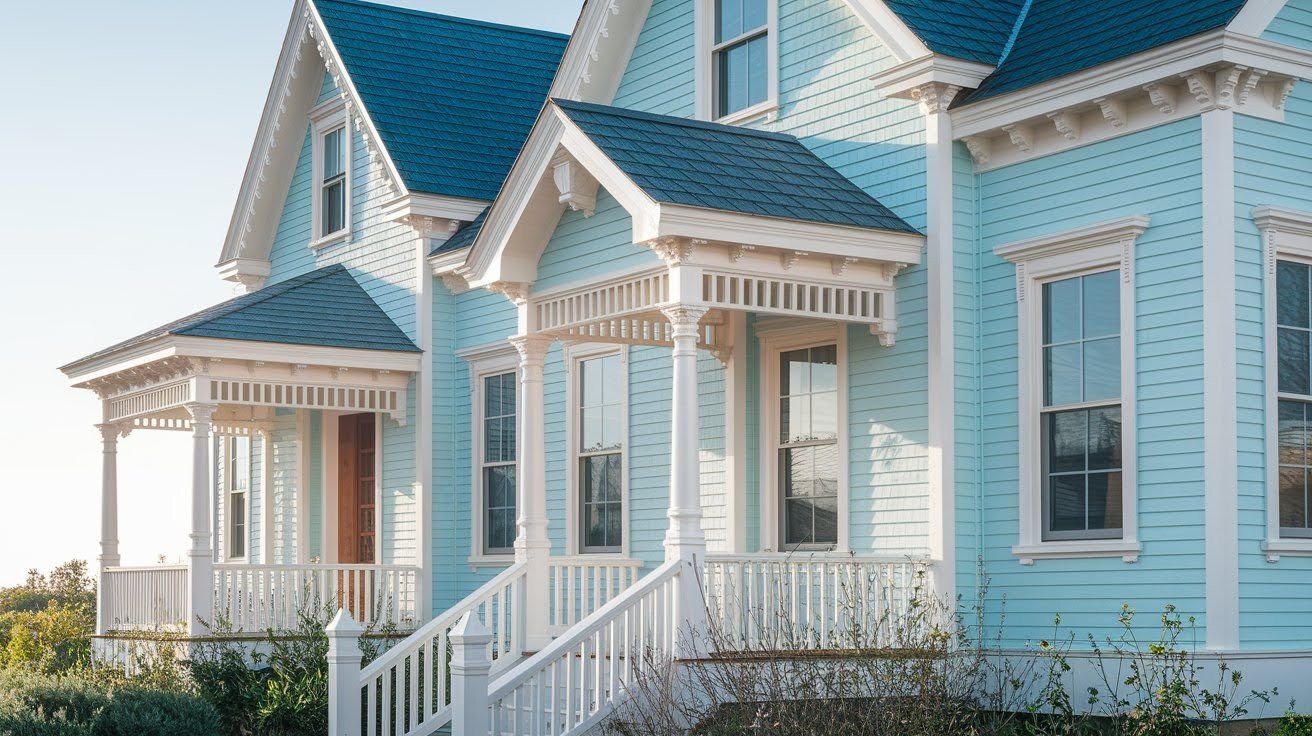
This gentle, airy shade brings lightness to Victorian exteriors while maintaining refined character.
Powder blue pairs beautifully with white or cream accents, creating a fresh, inviting appearance.
This color choice works particularly well in coastal settings or areas with abundant natural light, offering timeless appeal.
The soft tone complements intricate gingerbread details without overwhelming the architectural elements that make Victorian homes so distinctive and charming.
3. Peacock Blue Drama
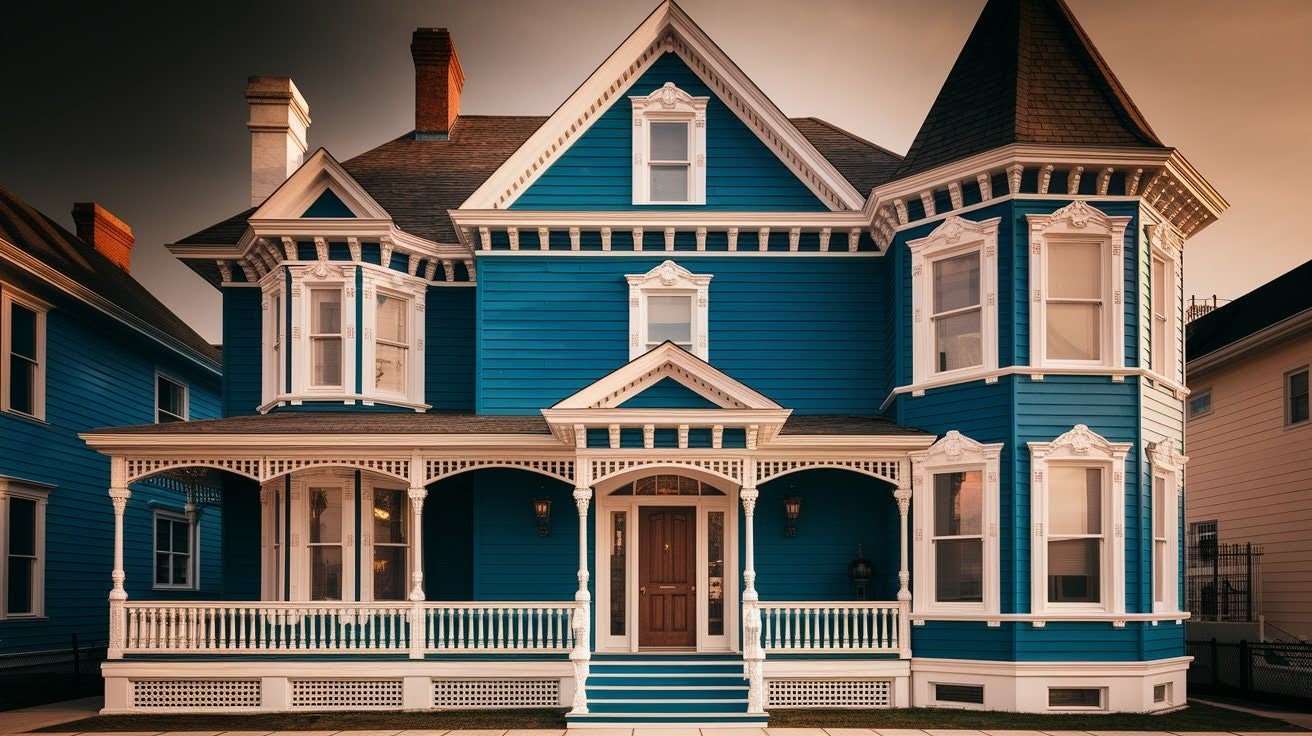
Rich and bold, peacock blue makes a confident statement for homeowners seeking standout curb appeal.
This vibrant shade highlights Victorian architectural details while creating memorable visual impact.
The color’s depth and intensity work best with white trim to balance its dramatic presence and maintain architectural harmony.
Peacock blue suits homeowners who appreciate striking color choices that honor Victorian traditions of using bold, expressive hues on residential exteriors.
4. Slate Blue Balance
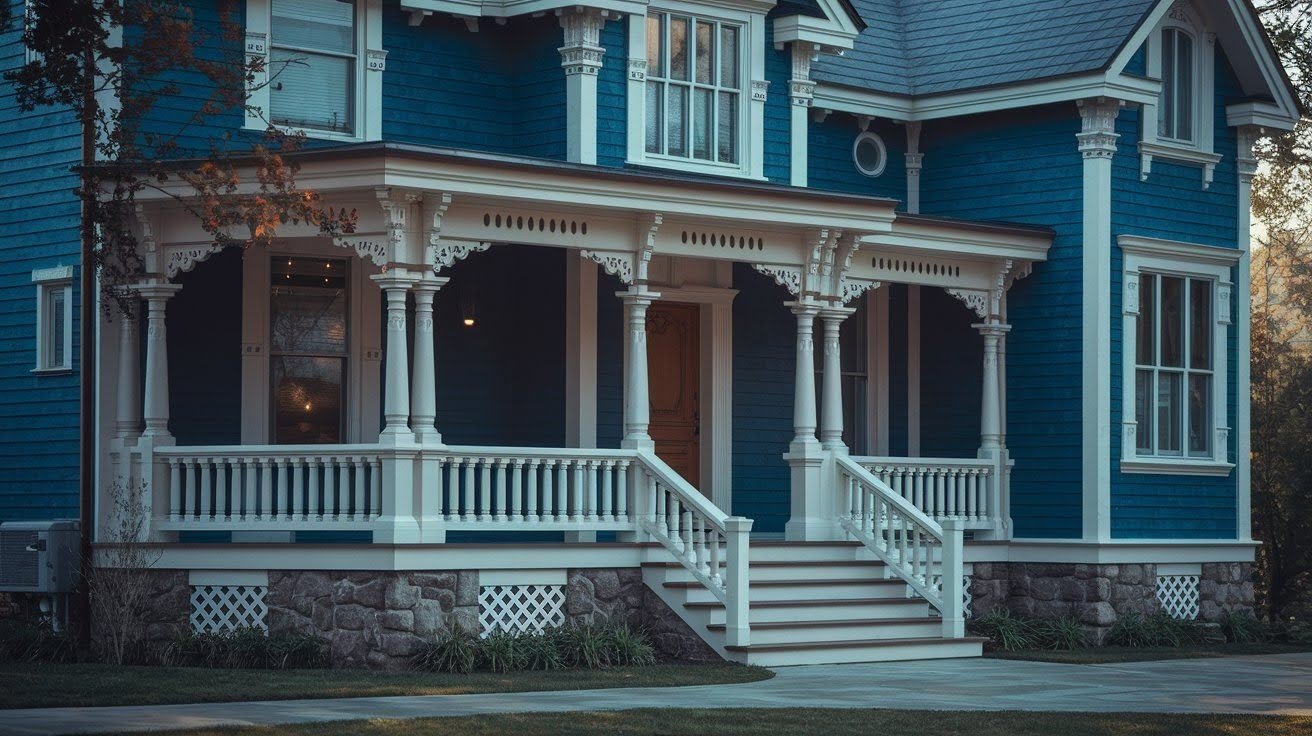
This moody, sophisticated neutral complements natural materials like stone foundations and wood elements.
Slate blue offers versatility, working with various accent colors while maintaining the dignified character Victorian homes deserve.
The understated tone provides an excellent backdrop for ornate trim work and decorative features.
This shade works particularly well in regions with variable weather conditions, as it maintains its rich appearance across different lighting situations throughout the seasons.
5. Sky Blue Serenity
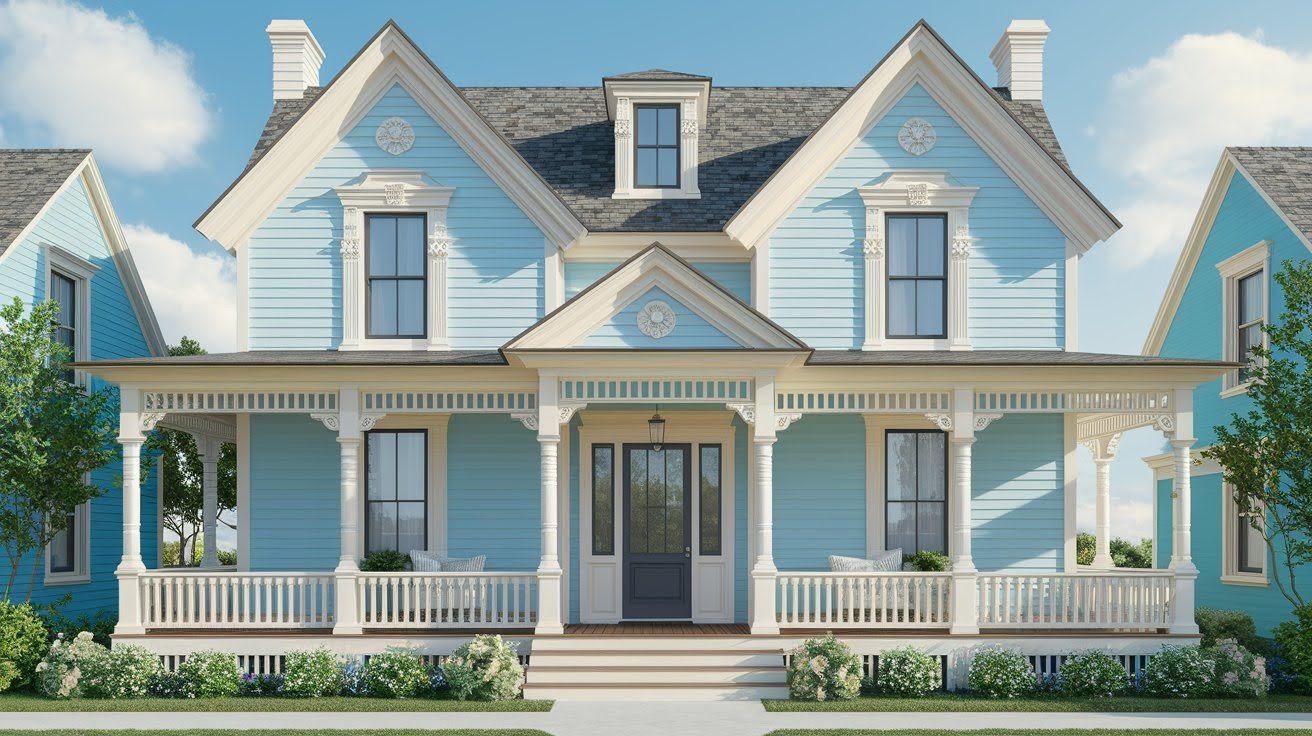
Light and cheerful, sky blue brings coastal-friendly appeal to Victorian exteriors.
This refreshing shade creates an inviting atmosphere while complementing the intricate details that define Victorian architecture.
Sky blue works exceptionally well in sunny climates where lighter colors help reflect heat and maintain comfort.
The cheerful tone pairs beautifully with white or cream trim, creating a classic combination that feels both traditional and fresh for modern living.
6. Steel Blue Modern Twist
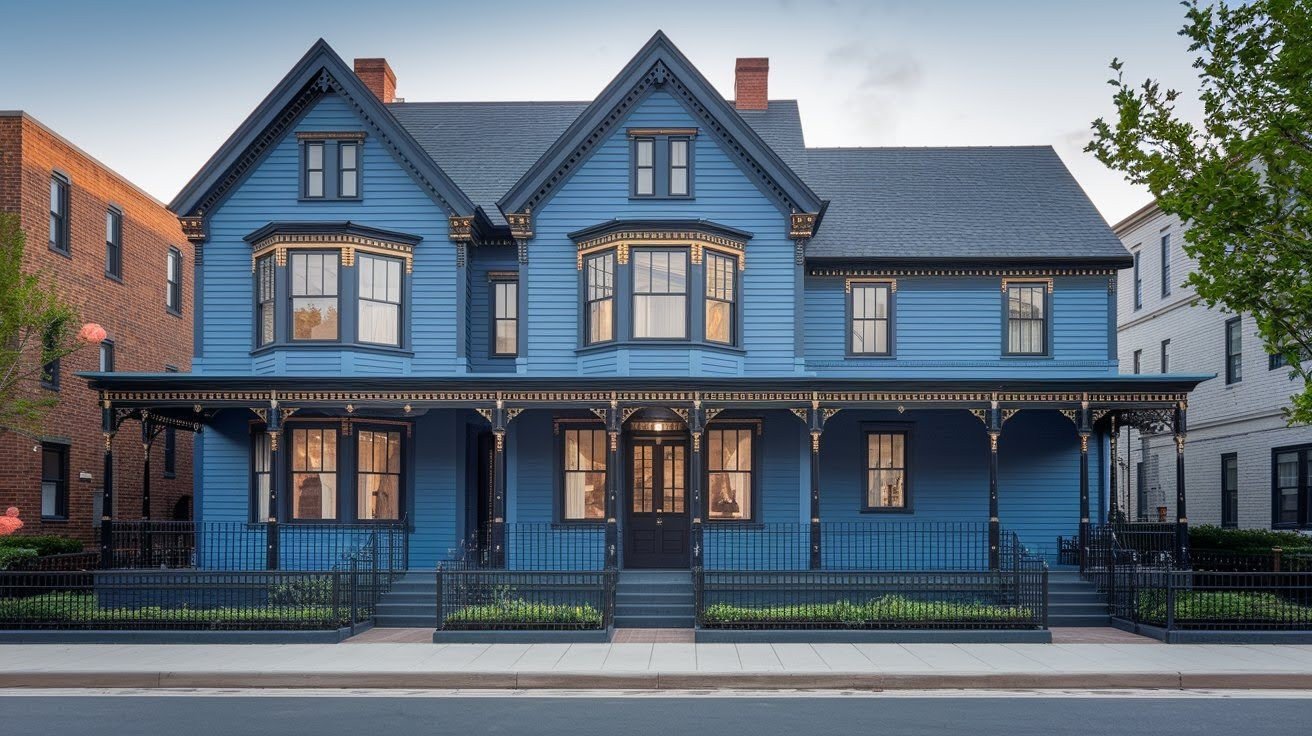
Sleek and urban, steel blue offers a contemporary interpretation of Victorian color traditions.
This sophisticated shade pairs excellently with black or metallic finishes, creating striking contrast against ornate architectural details.
Steel blue appeals to homeowners who appreciate modern sensibilities while respecting historic character.
The color works particularly well on Victorian homes in urban settings, bridging the gap between historical architecture and contemporary neighborhood aesthetics with refined style.
7. Colonial Blue Heritage
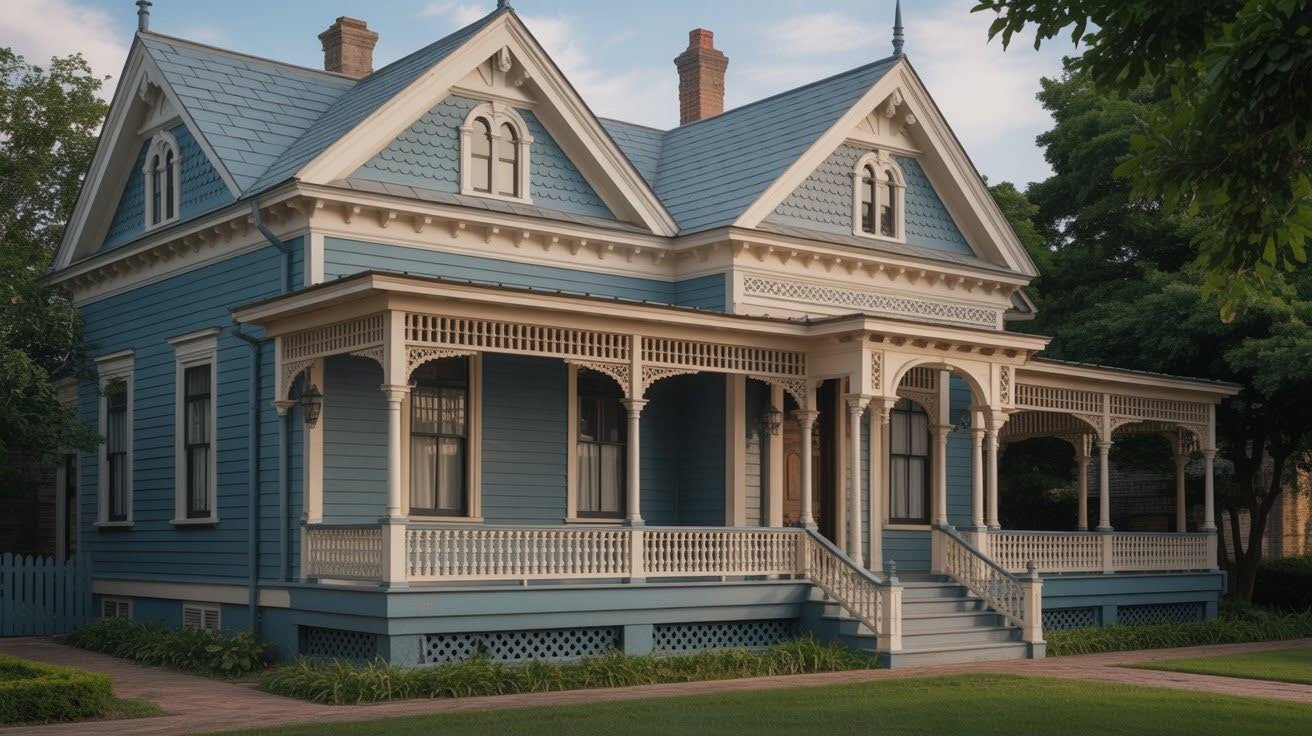
Classic and historical, colonial blue represents authentic Victorian color choices that honor architectural heritage.
This traditional shade creates an ideal backdrop for showcasing intricate trim work and decorative elements that define Victorian design.
Colonial blue maintains historical accuracy while providing timeless appeal that transcends passing trends.
The color works beautifully with cream or white accents, creating combinations that reflect the dignified character homeowners sought when these architectural gems were originally constructed.
8. Teal Blue Accents
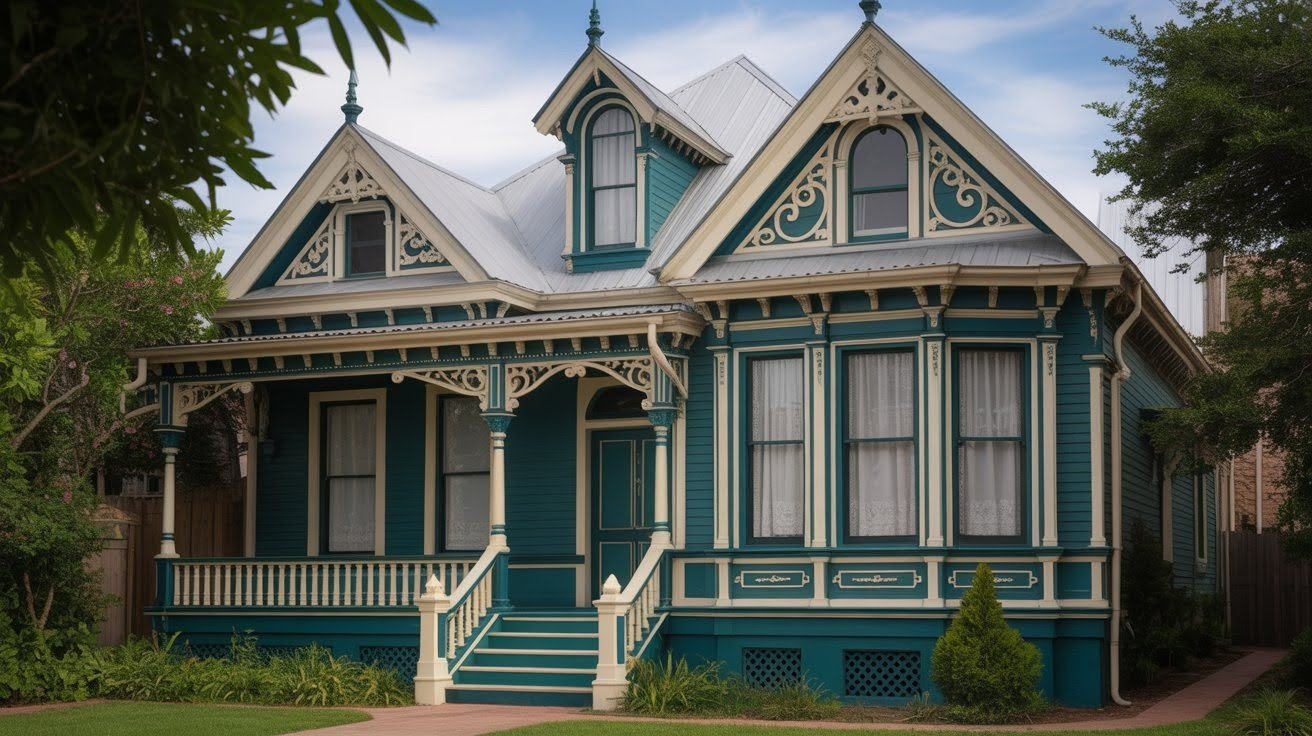
This unique blend of blue and green offers an artistic twist on traditional Victorian color schemes.
Teal creates distinctive curb appeal while maintaining the sophisticated character these historic homes deserve.
The color works particularly well with cream or gold trim, creating rich combinations that highlight architectural details.
Teal blue suits homeowners who appreciate distinctive color choices that stand out from typical neighborhood palettes while respecting Victorian design principles and maintaining refined appearance.
9. Indigo Romance
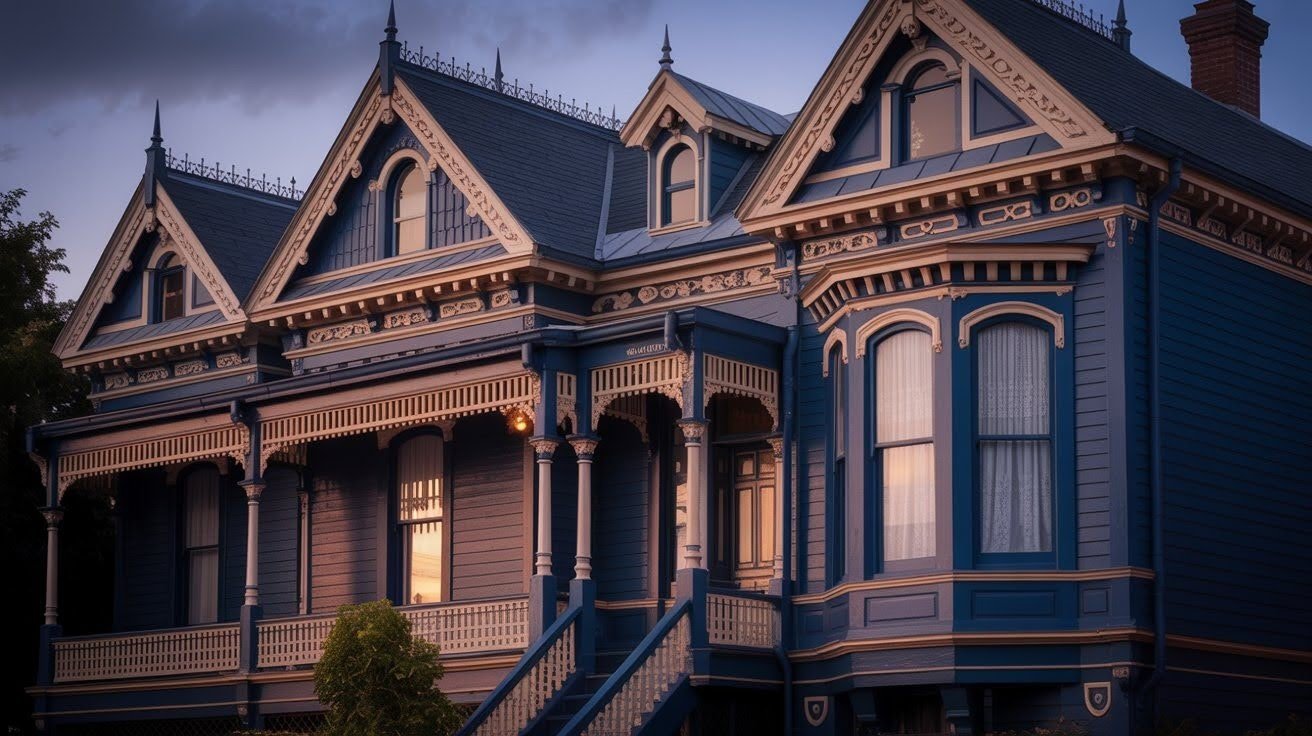
Intense and dramatic, indigo creates romantic appeal with its deep, saturated tone.
This rich shade works exceptionally well with gold or beige trim, creating luxurious combinations that highlight ornate Victorian details.
Indigo maintains its depth across various lighting conditions, making it practical for different regional settings.
The color appeals to homeowners who appreciate bold choices that honor Victorian traditions of using rich, expressive colors to showcase architectural craftsmanship and create memorable visual impact.
10. Robin’s Egg Blue Delight
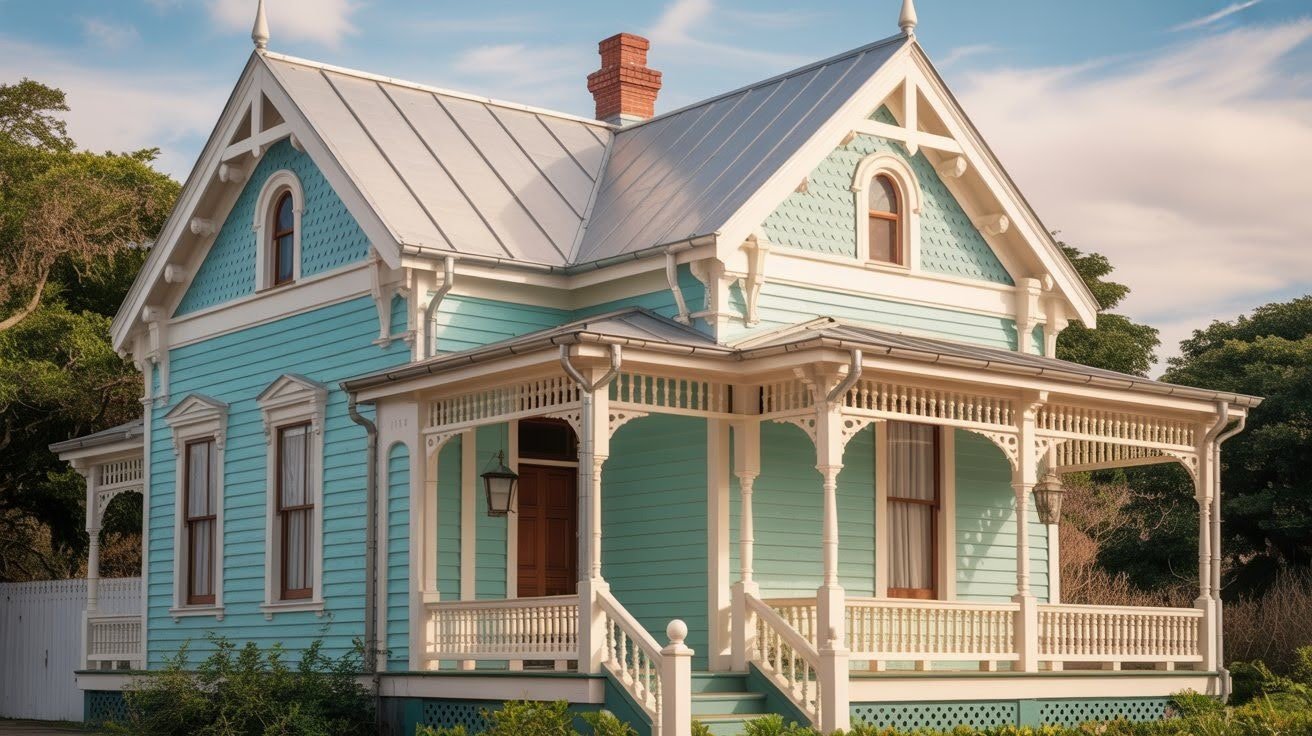
This vintage-inspired shade brings charming appeal to Victorian exteriors, particularly on sunny facades where its cheerful tone creates a welcoming atmosphere.
Robin’s egg blue complements white or cream trim beautifully, creating classic combinations that feel both historical and fresh.
The color works well in regions with abundant natural light, maintaining its soft character throughout different seasons.
This shade appeals to homeowners who appreciate gentle color choices that highlight architectural details without overwhelming the intricate elements.
11. Midnight Blue Mystique
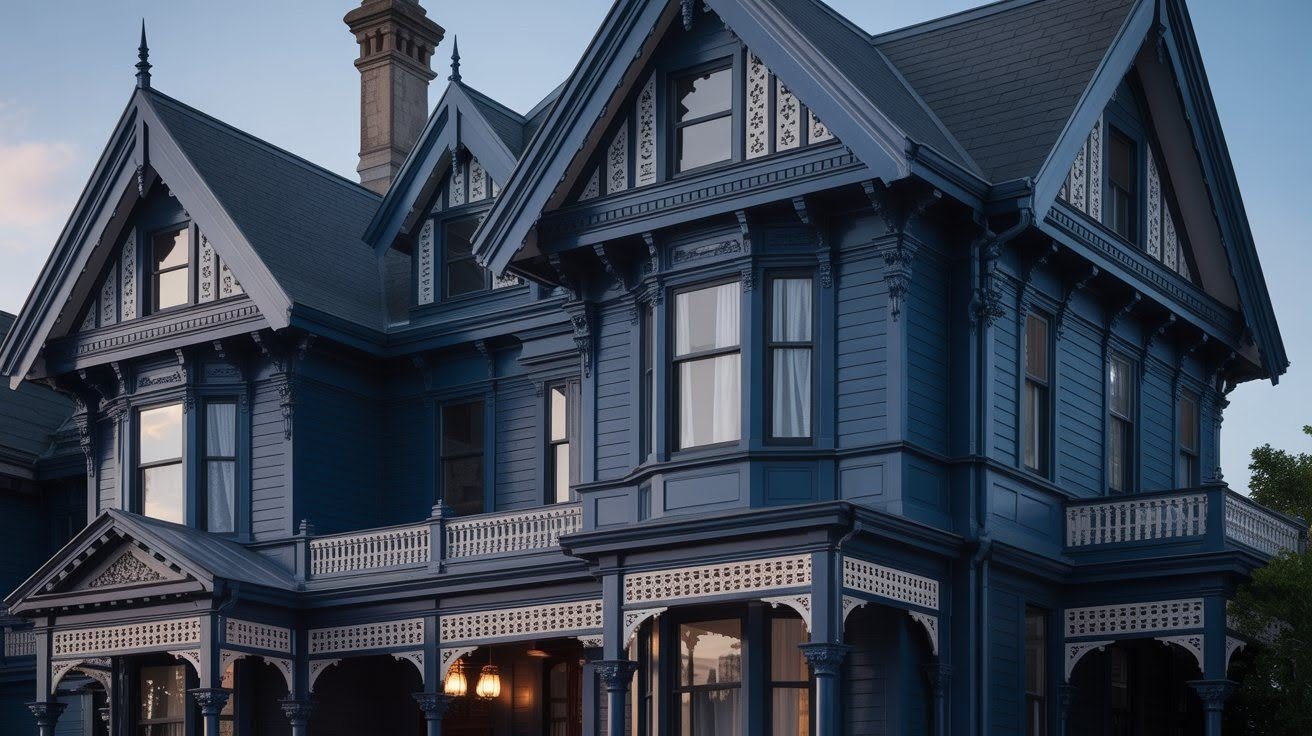
Deep and sophisticated, midnight blue adds remarkable depth to larger Victorian homes where bold color choices complement substantial architectural presence.
This rich shade creates dramatic impact while maintaining the dignified character these historic residences deserve.
Midnight blue works exceptionally well with white or cream trim, providing striking contrast that highlights ornate details.
The color maintains its intensity across various lighting conditions, making it practical for different climates while creating a memorable curb appeal that honors Victorian design traditions.
12. Periwinkle Whimsy
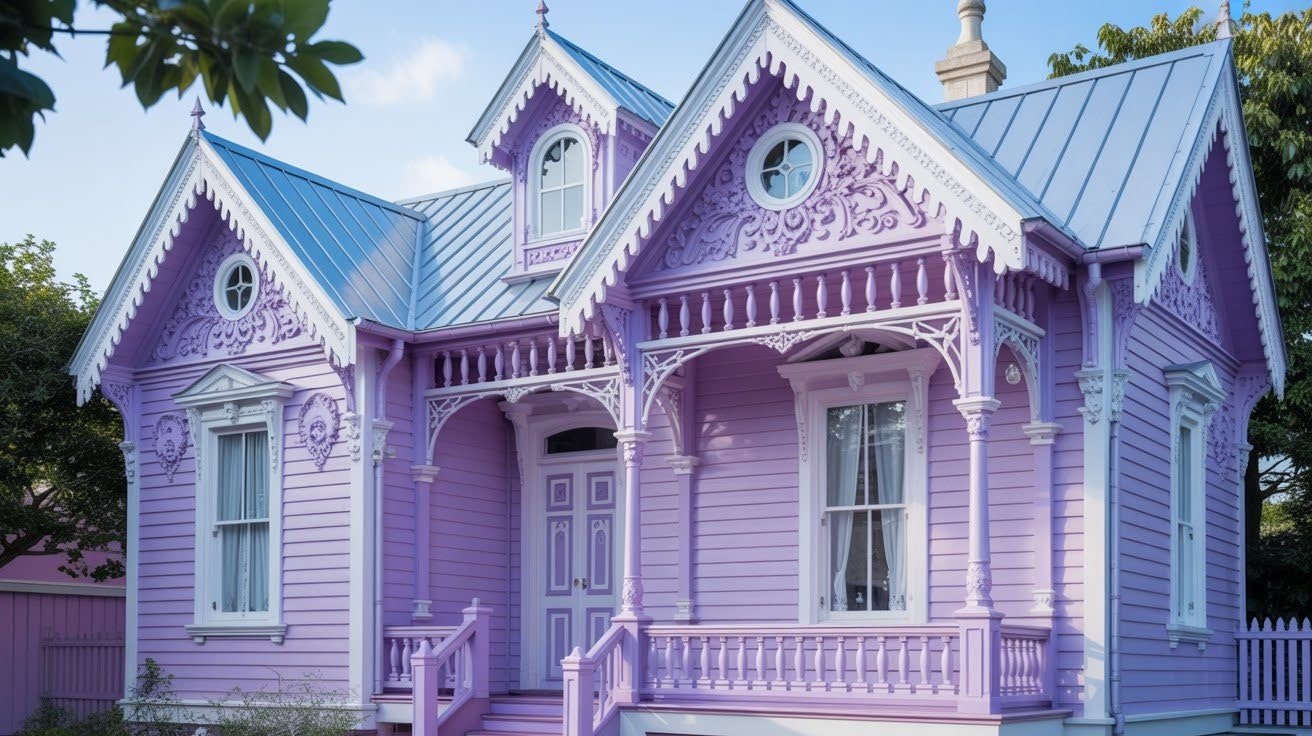
This bluish-lavender tone creates feminine or fairytale appeal that suits Victorian homes with particularly ornate architectural details.
Periwinkle offers a unique color choice that stands out from traditional blue options while maintaining sophisticated character.
The soft hue works beautifully with white or cream accents, creating gentle combinations that highlight decorative elements without overwhelming them.
This shade appeals to homeowners who appreciate distinctive color choices that create enchanting curb appeal while respecting Victorian architectural heritage and design principles.
13. Cobalt Blue Pop
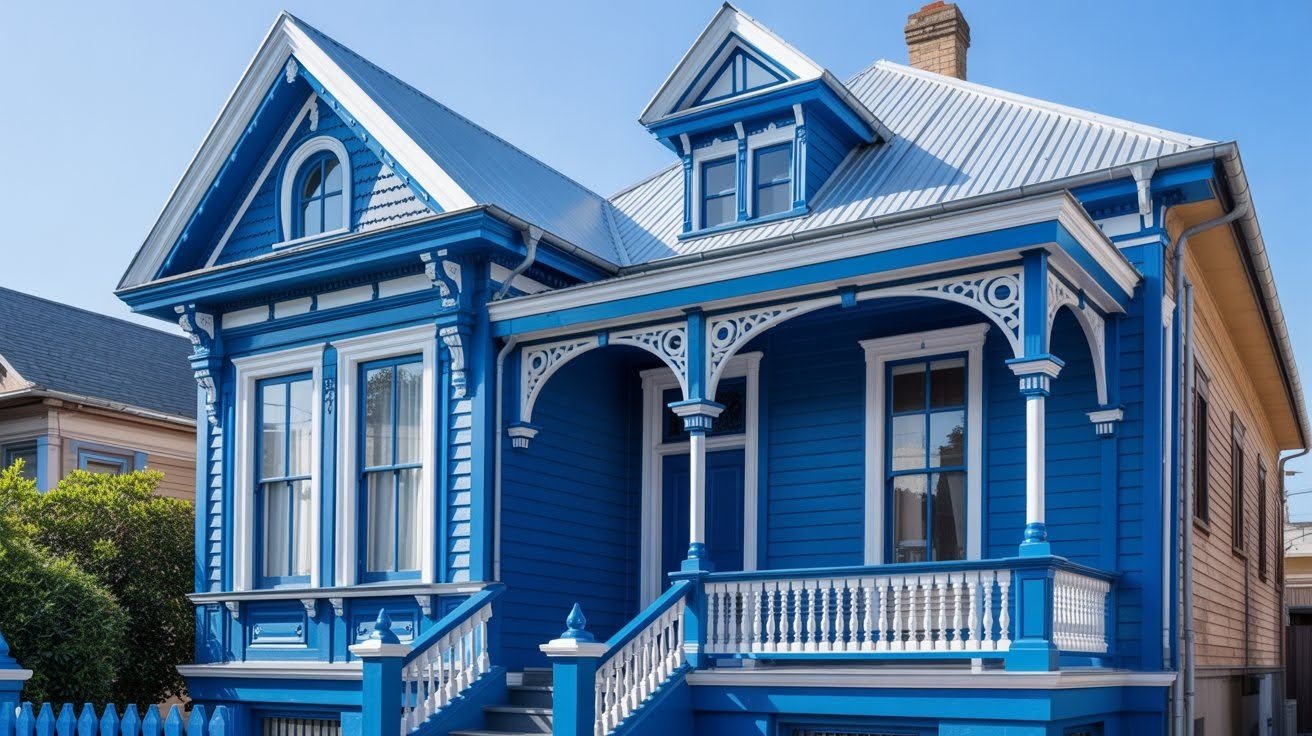
Vivid and energetic, cobalt blue creates the perfect choice for modern Victorian blends that honor historical architecture while embracing contemporary sensibilities.
This striking shade provides an excellent backdrop for showcasing intricate trim work and decorative features that define Victorian design.
Cobalt blue works particularly well with white accents, creating bold combinations that make architectural details stand out.
The vibrant tone suits homeowners who appreciate confident color choices that create memorable visual impact while maintaining the sophisticated character these historic homes deserve.
Tips for Painting a Victorian House Blue
Professional painting techniques and color combinations help achieve beautiful, lasting results on historic Victorian home exteriors.
- Prep & Preservation: Check wood condition and remove loose paint. Clean surfaces thoroughly and sand rough areas. Apply quality exterior primer for proper adhesion and long-lasting results.
- Trim & Accent Colors: Pair blue with whites for crisp contrast, creams for softer appeal, or golds for luxury. Burgundy and forest greens also complement blue beautifully on Victorian homes.
- Finishing Touches: Add shutters, preserve stained glass, and coordinate front door colors. Paint railings and porch floors in complementary shades for cohesive exterior design.
Final Thoughts
Selecting the perfect blue requires careful consideration of samples and swatches in various lighting conditions.
Test colors on different sides of your home to see how they appear in morning sunlight versus evening shadows.
Hold samples against existing architectural elements to ensure harmony with your Victorian’s unique features.
Bold blues create timeless curb appeal that honors your home’s historic character while making a confident statement.
These rich, saturated tones complement Victorian architecture beautifully and stand the test of time better than trendy alternatives.
We’d love to see your blue Victorian transformation! Share photos of your favorite blue and trim combinations in the comments below, or contact us for help creating a custom color palette that perfectly suits your home’s architectural style and neighborhood setting.
Frequently Asked Questions
What’s the best blue shade for a small Victorian house?
Lighter blues like powder blue or sky blue work well for smaller Victorian homes as they create an airy, open feeling. These softer tones won’t overwhelm the architectural details and make the house appear larger.
How do I choose between warm and cool blue tones?
Consider your home’s surroundings and existing materials – cool blues complement stone and modern elements, while warm blues work better with wood and traditional settings. Test samples in different lighting conditions to see which feels right for your specific location.
What trim colors work best with dark blue Victorian exteriors?
Crisp white and warm cream are classic choices that create beautiful contrast with dark blues like navy or midnight blue. Gold accents can add luxury, while burgundy trim creates dramatic, sophisticated appeal.
Can I use multiple blue shades on one Victorian house?
Yes, using different blue tones for the main body, trim, and accent areas can create depth and visual interest. Keep shades within the same color family and vary the intensity rather than switching between completely different blue types.
How often should I repaint my blue Victorian house exterior?
Quality exterior paint typically lasts 7-10 years, but Victorian homes may need touch-ups every 5-7 years due to their detailed woodwork. Regular maintenance and proper surface preparation help extend paint life and protect your investment.


